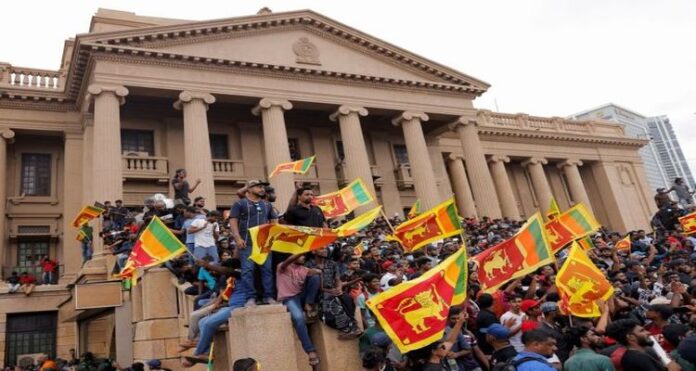| Translate This News In |
|---|
As the country’s economic crisis continues, Sri Lanka’s protest movement reached its 100th day on Sunday, forcing one president from office and focusing on his successor.
Gotabaya Rajapaksa fled his palace shortly before protestors stormed it last weekend and resigned from the presidency on Thursday. His poor management is blamed for Sri Lanka’s financial turmoil, which has left its 22 million people facing food, fuel, and medicine shortages since late last year.
The anti-Rajapaksa campaign, which was primarily organized through posts on Facebook, Twitter, and TikTok, drew people from all over Sri Lanka’s often insurmountable ethnic divides.
Minority Tamils and Muslims banded together with the majority Sinhalese to demand the removal of the once-powerful Rajapaksa clan.
It started with a two-day mass demonstration on April 9, when tens of thousands of people found shelter in front of Rajapaksa’s office – a crowd so large that the organizers decided to stay.
Following Rajapaksa’s resignation, Sri Lanka’s constitution automatically installed Prime Minister Ranil Wickremesinghe as acting president. He is now the leading candidate to prosper him permanently in a parliamentary vote next week.
Protesters despise the veteran politician as an ally of the Rajapaksa clan, four brothers who have monopolised the island’s politics for years.
Prasad Welikumbura, a social media activist and protest campaign supporter, believes Wickremesinghe should step down as well.
“It’s been 100 days since it began,” Welikumbura tweeted. “However, the system is still far from being transformed. Ranil, you’re not my president.”
Mahinda Rajapaksa, Rajapaksa’s elder brother, resigned as premier in May, and Wickremesinghe was appointed to replace him despite being an opposition MP indicating a party with only one seat in parliament.
The move did little to appease the protesters, and when they stormed Rajapaksa’s heavily guarded 200-year-old Presidential Palace, they also set fire to Wickremesinghe’s private home.
Now, Rajapaksa’s SLPP party, which has over 100 MPs in the 225-member parliament, is supporting Wickremesinghe in the vote scheduled for Wednesday.
“We are now mentioning with groups involved in the ‘Aragalaya’ (struggle) on turning the initiative against Ranil Wickremesinghe,” a protester spokesman told AFP.
Since Rajapaksa’s departure, protesters have vacated three key state buildings they had occupied: the 200-year-old presidential palace, the Prime Minister’s official Temple Trees residence, and his office.
Wickremesinghe has directed the military and police to do whatever is necessary to maintain order, and defence officials have stated that more troops and police will be deployed to the capital on Monday to increase security around parliament prior to the vote.


















